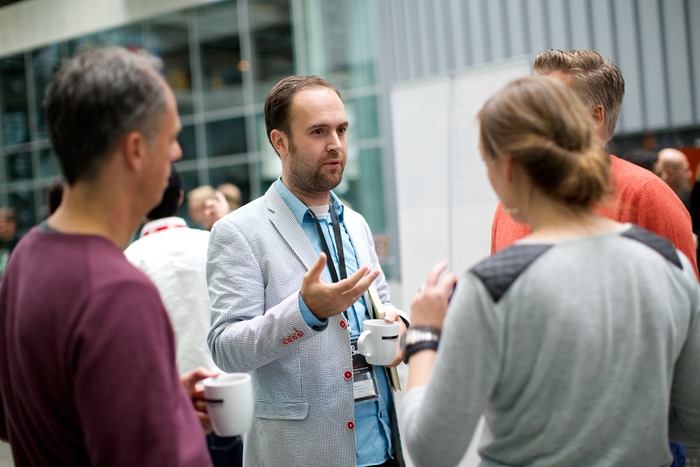Stuck in a meeting? Yawn. Whether in person or over the video, they’re seldom very productive. Yet crowdsourcing can be.
A greatly expanded gathering of the tribe, crowdsourcing taps the collective brainpower of a group far beyond staff or boardroom. If two heads are better than one, what might 500 co-create?
Yet even crowdsourcing can devolve into internal politics or similar issues. Some companies refuse to consider ideas that originate outside their organization. When NASA tried such an experiment, the scientists weren’t having it; they wanted to be the ones to design and develop the new.
However, there are several areas in which innovative crowdsourcing is seeing success: education is harnessing this solution particularly well in the wake of the pandemic, and the Red Cross has designed Enable Makeathon both to create new product ideas to assist people with disabilities and to ensure these ideas make it to market.

Key Benefits of the Crowd
How can crowdsource benefit your organization? Here are half a dozen ways:
- Expanded brainpower
- Faster problem solving
- Unexpected solutions to intractable problems
- Less management stress
- Greater access to customer-centric data
- More marketing buzz
Putting more minds to work on a problem can give your organization the benefit of experience, expertise, and a knowledge base far beyond your immediate team. This mitigates management stress, and likely means less time to a viable solution.
And by utilizing fresh thinking, your crowdsourcing crew may come up with an out-of-the-box approach to a tough problem that’s surprisingly effective. It’s why Steve Jobs prioritized using external experts: he said,” It doesn’t make sense to hire smart people and tell them what to do; we hire smart people so they can tell us what to do.”
Tapping Into the Talent Network
Still skeptical? Think of it this way: crowdsourcing is akin to what’s known as the gig economy, which is when companies employ just-in-time workers for specific jobs, rather than keeping such people on the payroll. More than 68 million people gig in the US alone, performing flex jobs for other organizations. You might call them freelancers or independent contractors, but the idea remains the same: they comprise a talent network you can tap into as needed.
Crowdsourcing is an as-needed brain trust you can utilize in the same way. It’s popular in the technology space because no software team has the breadth of skills you can assemble in a random group of white hat gig hackers. Their innovation alone as they bounce ideas off one another in an open-source setting is breathtaking, and it’s often how new apps emerge. Instead of divide and conquer, with crowdsourcing the obverse is true: collaborate and co-create.

Lessons from the Best
Google is the granddaddy of innovation, and while every organization can’t be Google, crowdsourcing can help your company live Google’s codified Nine Principles of Innovation. Here’s how this works for tech:
- Gather, vet, build: crowdsourcing allows individuals and teams of employees to rapidly translate funded ideas into working applications.
- Eye the end user, not profits: Along the lines of “if you build it”, this principle says that by focusing on the user, revenue will be a slam-dunk. Crowdsourcing helps generate the winning solution for the customer, more quicker.
- Revolution, not evolution. Conventional wisdom may say make the product ten percent better; crowdsourcing seeks to improve it tenfold. That’s a wow factor.
- Access the entire Internet. If you need an IoT solution, crowdsourcing delivers the results you need in a fraction of the timeline, so you’ll bring the product to market much faster.
- Good enough for now. Former Google executive Marissa Mayer declared Google’s goal was “innovation, not instant perfection.” An updated version of this principle is, “ship and iterate.” Technology products are in perpetual development; no one waits for perfection.
- Pursue other passions. Like the most innovative companies, Google encourages employees to spend 20 percent of their time pursuing their passions—even if these exceed the scope of their job. A mind given free rein is at the heart of creative thinking. If your organization can’t spare that much time, use the 20% principle to create more engaged, productive employees who turn ideas into products faster.
- Peruse the planet. There are eight billion people on Earth now; what are the odds the best and brightest all work for you? Google’s philosophy is that the smartest people are always elsewhere, and crowdsourcing helps you find them and tap their ideas and talent.
- Fail fast, fail often. While this catchphrase didn’t originate with Google, it defines their culture. Crowdsourcing lowers the cost of failing your way to success.
- Make it matter. At the bottom, having a mission that makes a difference is the most crucial principle. Google team members have a “very strong sense of mission and purpose. We seriously believe that the work we do has a huge impact on millions of people in a positive way,” says their brand evangelist. Crowdsourcing can be an excellent way to extend this mission to like-minded others around the world.
